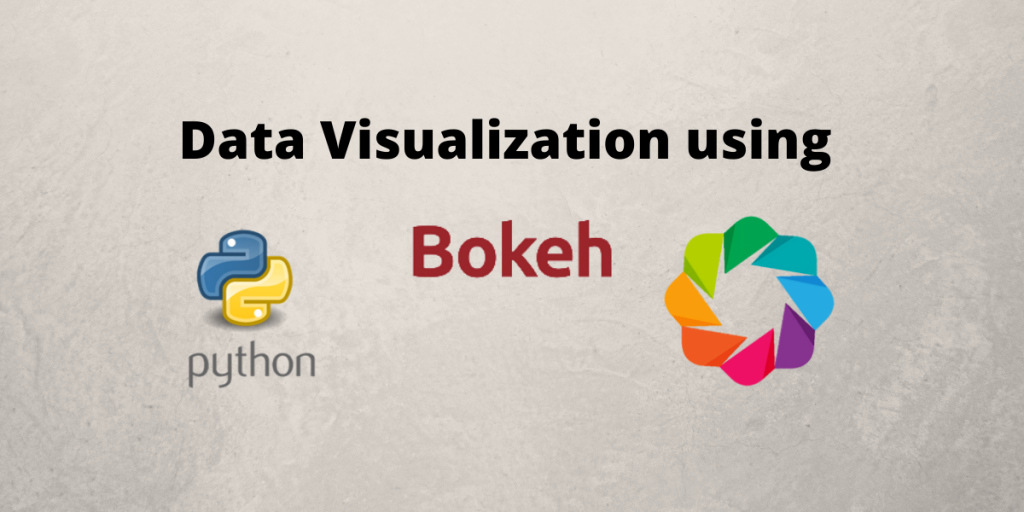In this article, we will be looking into data visualization using Python Bokeh.
Bokeh allows users to take in data in any format such as CSV, JSON, hard-coded data, or databases. We can create scatter plots, line charts, etc using this library. It is widely used for stock market analysis in the industry because it is very easy to integrate this library with different web frameworks as well such as JS, Django, and HTML.
Keep reading this article to get some insights on the usage of Bokeh
Features of Python Bokeh
- Interactive: Bokeh is a very interactive library that provides the functionality of interactivity to the graphs in addition to static plots.
- Powerful: Bokeh is a powerful library because it allows the addition of JavaScript for use-cases.
- Portable: The output of the Bokeh charts can be rendered on any web framework such as Django and Python and also on Jupyter Notebooks.
- Flexible: Easy to plot custom and complex use cases.
- Interaction with other popular tools: Allows easy interaction with pydata tools such as Pandas and Jupyter notebook.

Starting Out With Data Visualization using Python Bokeh
Whenever we do anything with python, it is a good practice to create a virtual environment and the best way to do is by running the command pip install pipenv. Once you run this command, you will have access to the pipenv command and you can run the pipenv shell. This ensures that the virtual environment is setup.
Now you can use the virtual environment to install Bokeh and Python pandas. You can use the command:
pipenv install bokeh pandas
We will be using pandas because this library allows us to read the CSV file as a dataframe.
1. Plotting a line Graph
Before going into plotting charts from the CSV file, we will walk you through the process of plotting a simple line chart to get you familiarized with Bokeh.
from bokeh.plotting import figure, output_file, show
figuremodule will help users create plots.output_filewill define the name of the HTML file to generate.showmodule will generate and show the HTML file.
x=[1,2,3,4,5]
y=[4,3,3,5,4]
For data we just create it as 2 lists -[1,2,3,4,5] and [4,3,3,5,4].
These are points such as (1,4), (2,3), (3,3), and so on.
output_file('index.html')
We set the output file to index.html using the above code.
p = figure(
title = 'Example chart',
x_axis_label = 'X axis',
y_axis_label = 'Y axis'
)
We use the figure() to create the plot. The figure() takes in multiple attributes. You can refer to the documentation of this module for further details.
We shall use the title, x_axis_label and y_axis_label.
p.line(x, y, legend="test", line_width=1.5)
Now coming to rendering the glyph, we will use the code snippet above. We specify the two lists x and y defined earlier. We also specify additional parameters such as legend and line_width.
Kindly note, these parameters are used here because we are using line chart. These parameters tend to vary for the other types of graphs.
show(p)
We use the show() function to display the result and the result is displayed on index.html as shown below. The entire code is attached as well.
from bokeh.plotting import figure, output_file, show
x=[1,2,3,4,5]
y=[4,3,3,5,4]
# defining the output file
output_file('index.html')
# Adding the plot
p = figure(
title = 'Example chart',
x_axis_label = 'X axis',
y_axis_label = 'Y axis'
)
# Rendering the graph
p.line(x, y, legend="test", line_width=1.5)
# Display the results
show(p)

2. Plotting graphs from CSV files
To plot a graph, we will use a simple dataset of Cars which has 2 columns namely the name of the car and horsepower. We will understand the correlation between these parameters using graphs. The dataset is as shown below

The above dataset can be plotted as a histogram (hbar) graph using Bokeh and the code for this is as follows:
from bokeh.plotting import figure, output_file, show, save, ColumnDataSource
from bokeh.models.tools import HoverTool
from bokeh.transform import factor_cmap
from bokeh.palettes import Blues8
from bokeh.embed import components
import pandas
df = pandas.read_csv('cars.csv')
source = ColumnDataSource(df)
output_file('index.html')
car_list = source.data['Car'].tolist()
# Add plot
p = figure(
y_range=car_list,
plot_width=800,
plot_height=600,
title='Cars With Top Horsepower',
x_axis_label='Horsepower',
tools="pan,box_select,zoom_in,zoom_out,save,reset"
)
# Render glyph
p.hbar(
y='Car',
right='Horsepower',
left=0,
height=0.4,
fill_color=factor_cmap(
'Car',
palette=Blues8,
factors=car_list
),
fill_alpha=0.9,
source=source,
legend='Car'
)
# Add Legend
p.legend.orientation = 'vertical'
p.legend.location = 'top_right'
p.legend.label_text_font_size = '10px'
# Show results
show(p)
The output rendered on index.html is as follows:

Conclusion
Hence, we come to the end of this article. Bokeh is one of the robust data visualization libraries that you can use for all your projects. Do try out the examples in this article and let us know what you feel in the comments section below.
